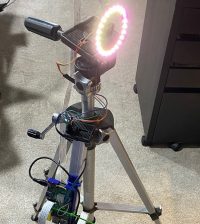- makeITcircular 2024 content launched – Part of Maker Faire Rome 2024Posted 2 weeks ago
- Application For Maker Faire Rome 2024: Deadline June 20thPosted 2 months ago
- Building a 3D Digital Clock with ArduinoPosted 7 months ago
- Creating a controller for Minecraft with realistic body movements using ArduinoPosted 7 months ago
- Snowflake with ArduinoPosted 8 months ago
- Holographic Christmas TreePosted 8 months ago
- Segstick: Build Your Own Self-Balancing Vehicle in Just 2 Days with ArduinoPosted 8 months ago
- ZSWatch: An Open-Source Smartwatch Project Based on the Zephyr Operating SystemPosted 9 months ago
- What is IoT and which devices to usePosted 9 months ago
- Maker Faire Rome Unveils Thrilling “Padel Smash Future” Pavilion for Sports EnthusiastsPosted 10 months ago
OpenAuto, the Open Source In-Car Entertainment System

Android Auto adds an untold level of convenience to your driving experience.
Designed to emulate an AndroidAuto head unit, OpenAuto runs on Raspbian Stretch and is based on the aasdk and Qt libraries, with the aim of running AndroidAuto on a Raspberry Pi 3 without any stability issues.
With a range of display options (480p, 720p and 1080p with 30 or 60FPS) and hardware acceleration to decode video, you’ll probably want to pair your Raspberry Pi up with a touchscreen device to get the best out of this. OpenAuto takes up 4.9GB, so you’ll need at least an 8GB microSD card.
To get an idea of what it can do, check out the video below. Be aware, though, that the project is currently in beta. It currently supports Linux, Raspberry Pi 3, and Windows, and there are plans to add more features and platforms in the future.
Here’s a list of the current build’s features:
- 480p, 720p and 1080p with 30 or 60 FPS
- RaspberryPi 3 hardware acceleration support to decode video stream (video stream up to 1080p@60)
- Audio playback from all audio channels (Media, System and Speech)
- Audio input for voice commands
- Touchscreen and buttons input
- Bluetooth
- Automatic launch after device hotplug
- User-friendly settings
For those curious about the technical details, be sure to check the GitHub page here and the setup instructions.















